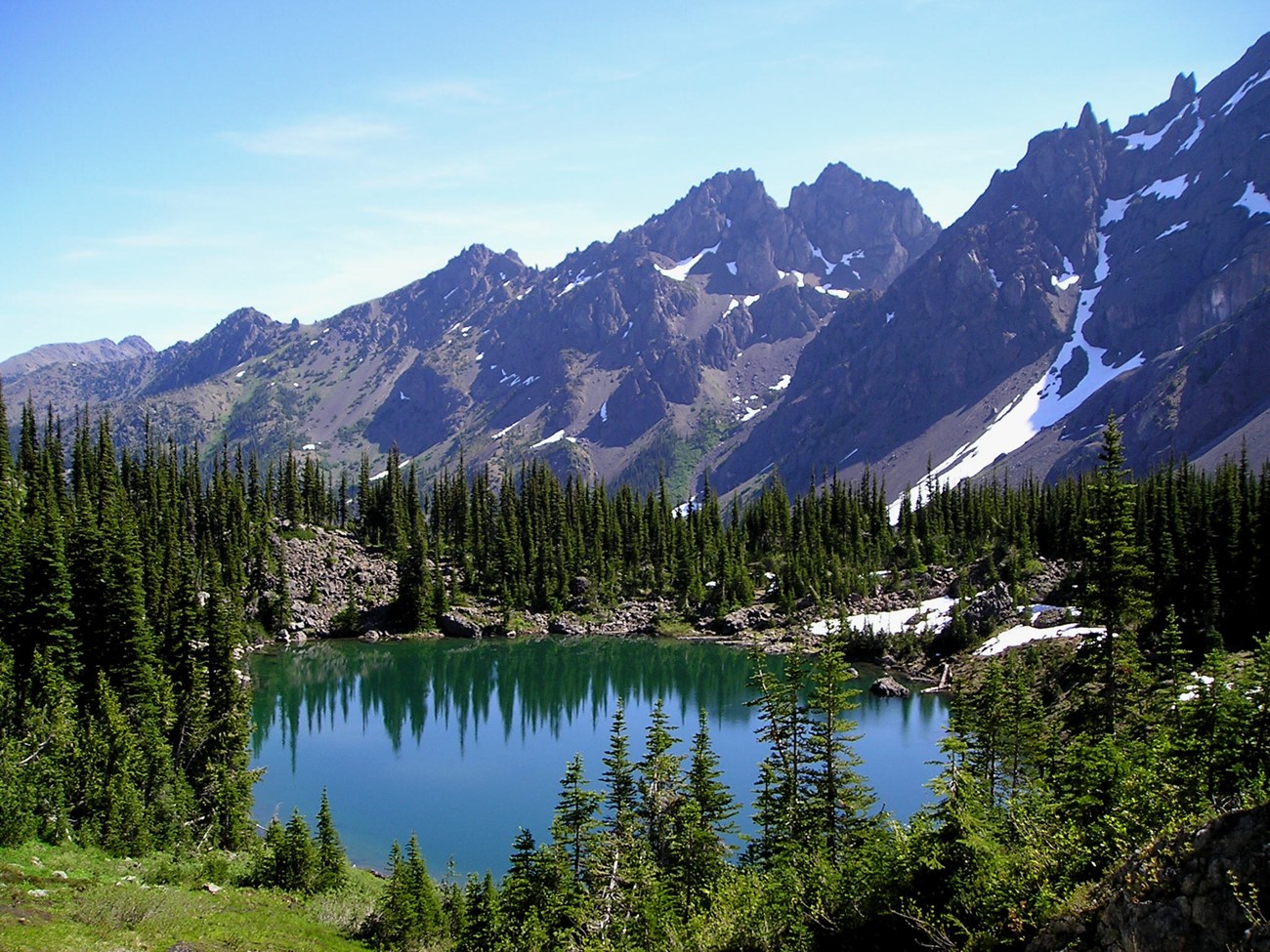"In order to enhance freedom, sometimes one needs to do things a little differently."
Listen
-
Episode Two: The Changing Face of Conservation
In conversation with Dick Martin. How have ideas and policies about how we take care of park resources evolved since the 1960s?
- Credit / Author:
- NPS
- Date created:
- 10/14/2020
The Changing Face of Conservation
VOICEOVER: “The Service . . . shall promote and regulate the use of the Federal areas known as national parks . . . by such means and measures as conform to the fundamental purpose of said parks . . .
LU ANN JONES (HOST): When the national park service was established in 1916, it set forth a singular mission:
VOICEOVER: . . . to conserve the scenery and the natural and historic objects and the wildlife therein . . . in such manner . . . as will leave them unimpaired for the enjoyment of future generations.”
JONES: The language may be a little obtuse, but the message is clear: preserve the land and its history, help the public enjoy the parks, and do both in a way that insures the integrity of their resources for generations to come. This is the founding mission statement of National Park Service.
But rangers quickly realized the tension at the heart of that mission. Preservation -- by its very nature -- would limit the public’s access. Consequently, the interpretation of that mission – and how it manifests in the day to day lives of our rangers – has changed over the years.
I’m National Park Service historian, Lu Ann Jones, and you’re listening to “A Sense of Place: Stories of Stewardship from the National Park Service.” In this series, we’re diving deep into the oral history archives of the National Park Service, to bring you the stories of the people who shaped the parks, and the Service.
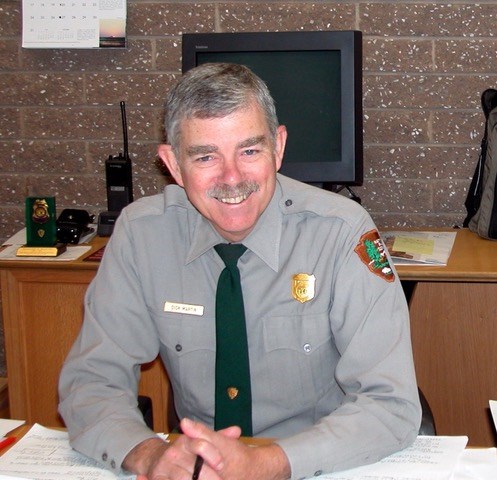
NPS
Today: The changing face of conservation.
DICK MARTIN (NARRATOR): When I was going to college, there was a movie—and I don't know who put it out, I don’t think it was the Forest Service —but it was about how to appropriately dispose of garbage in the wilderness. Lake wilderness with canoes and portages. Of course, in those days there was no lightweight food, it was cans or dried or smoked foods primarily—and so you had a lot of cans in your canoe. So what you were supposed to do was burn the can in the campfire—and then you're supposed to take it out to the middle of the lake and sink it. [chuckle] And that was what was taught in the movie.
JONES: When Dick Martin joined the National Park Service in 1962, prevailing wisdom on outdoor etiquette was questionable at best.
MARTIN: I was out there at Olympic National Park trying to, you know, keep poachers from poaching elk, and loggers from sneaking in and cutting down a tree [laughs]. There was a fair amount of illegal vegetation harvesting in those days, primarily for ornamental purposes. Picking some of the more attractive flowers for flower arrangements and also digging up some plants for landscape purposes in urban environments.
But in the late '60s there was a huge learning curve--not that the public is stupid, it had just been taught other things, you know, prior to the Pack It Out program.
JONES: There was a huge learning curve for the rangers, too. In a place like Olympic, there was a very slim staff.
Only 12 to 15 rangers tasked with responding to all the calls in a park that covered more than 900,000 acres--much of it challenging territory. Dick was what was known as a park ranger general. That meant he did a little bit of everything--and he was often learning on the job.
MARTIN: I really liked the variety of the job, because there was like, never a dull moment. You might have to change the oil in a generator in the morning, go change clothes and go to a school and give a talk. Always things to learn.
JONES: And for the first six years, the job was more or less manageable.
Then, something shifted. In the late 1960’s, the rangers found themselves inundated with a new kind of visitor.
MARTIN: We were just getting buried under backpackers!
JONES: The reason? Lightweight gear.
MARTIN: Nylon packs, lightweight sleeping bags, aluminum frame packs, lightweight stoves—which they'd had in Europe a long time, but only a few mountaineers, you know, in North America knew about.
JONES: Up until that time, lightweight gear wasn’t widely available in the U.S.
MARTIN: Just two or three places in North America where you could buy good leather hiking boots
JONES: Suddenly, the prospect of going out into the wilderness seemed a lot more manageable.
MARTIN: When all that stuff came along, it’s like, “Oh, my god, we can go out in the wilderness!”
And we don't have to carry a canvas tent anymore, we don't have to wear a canvas coat that's going to get soaking wet. The result of that was a lot of people started backpacking into the national parks all over the West, but particularly those that were close to urban areas, like Olympic.
And they were shitting in the woods and making social trails and camping in the middle of meadows with fire rings, so they could sit there behind their fire and have a beautiful view of the sunset. Don't blame them a bit—I did the same thing myself many times. And of course, a bunch of them would get in trouble, we'd have to go rescue them or wheel them out of the backcountry with a litter.
JONES: For decades, park ranger had been a more or less reactive job – something happens, you address it, and move on. But now, the rangers couldn’t keep up with the demands.
MARTIN: We needed some way to deal with this!
Even though Olympic was not formalized legal wilderness, it was in fact wilderness, and we managed it as such and viewed that as our mission. How are we going preserve this, protect it? What are the appropriate steps to take?
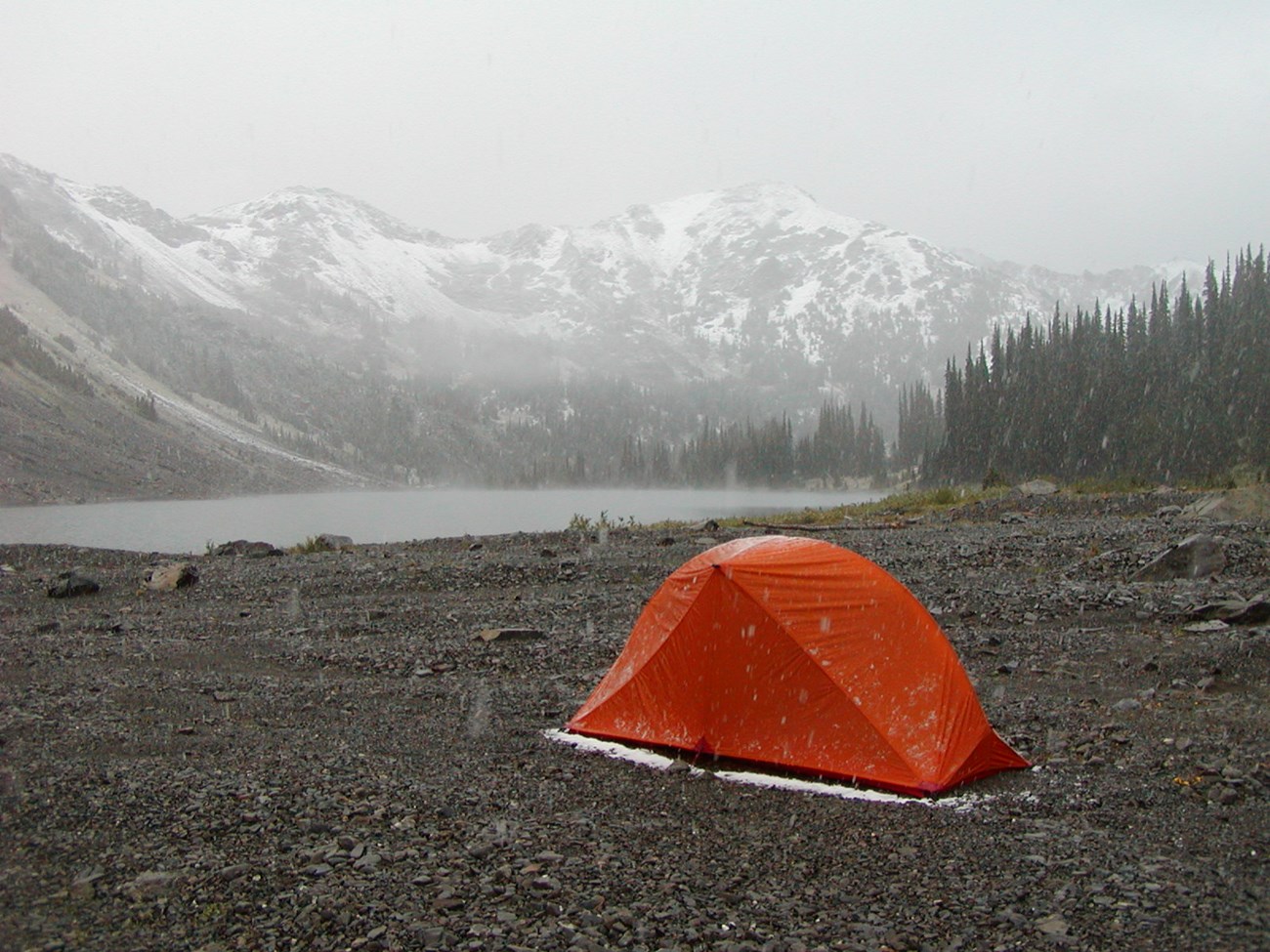
NPS
JONES: In 1964, the Wilderness Act had established formal protections for large swaths of natural land. Olympic park -- though technically wilderness -- needed NPS protection. To do that, the rangers needed a management plan.
MARTIN: So, the first thing we did was close all the old traditional dumps. The park had all kinds of old dumps in the backcountry that went back to the days of the Forest Service and that the park had continued. So, we closed all those. Put in pit toilets where we thought they were needed. We made a really strong emphasis on trail management and trail maintenance, so that the trails were encouraging to visitors to stay on the trail instead of go wandering off, shortcutting, making their own trails.
We started one of the first Pack It Out programs in 1968 or '69. And we started a permit system. Not nearly as formal as came along in the '70s. It was quite a challenge to get acceptance. Concepts like Leave No Trace and Minimum Impact hadn't been invented yet. I mean, we were thinking along those lines, but we didn't really have labels or comprehensive concepts of what those things meant. Those came along in the '70s.
But in the '60s, it was still, “Let's try to educate people as best we can, let's take care of the trails as best we can so people stay on the trails, and let's educate people on safe practices as best we can.”
JONES: When Martin transferred to Mount Rainer, he brought that education strategy with him. Rainer was a higher-profile park—with even more traffic. Thankfully, he also had more resources to reach out to the public.
MARTIN: The staff was large enough and articulate enough and dedicated enough to get this done.
I think it went on for more than one winter, but for sure one winter—all the rangers and the interpreters, the superintendent, assistant superintendent going around to climbing clubs, hiking clubs, conservation groups, Rotary, schools, this club, that club, didn't matter, explaining what we were trying to do and why we thought it was necessary.
The regional office actually gave us some funding for the development of the campsites and some of the media and educational materials.
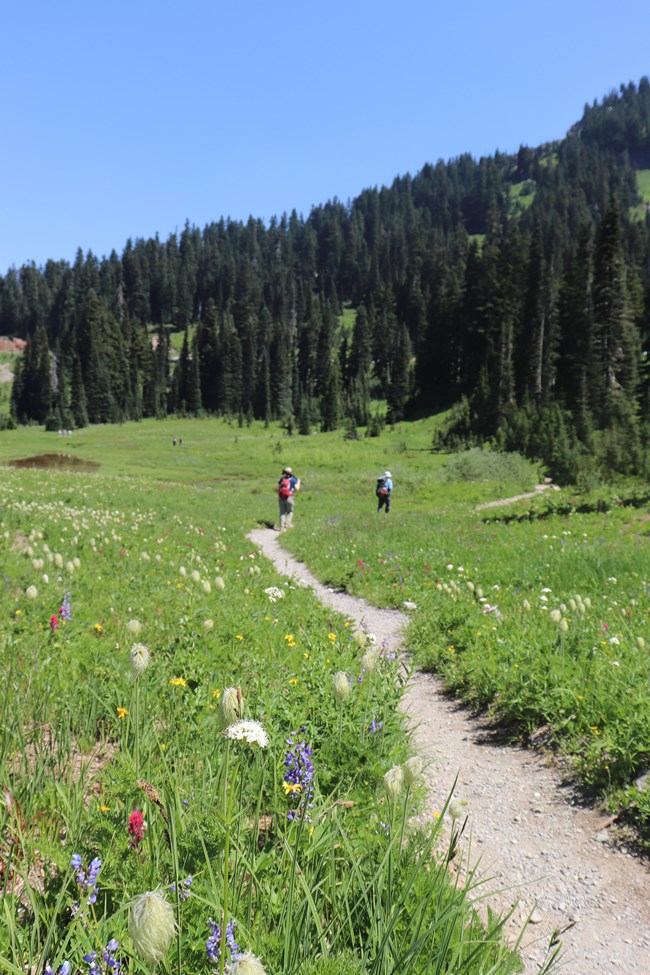
NPS
JONES: Part of that education was explaining why the NPS needed a permit system--a formalized way to determine what’s called a park’s carrying capacity, or the number of people who can use trails, meadows, cliff faces, and other resources without harming them.
MARTIN: Ultimately, what the park and the regional office decided to do was to call it an “experiment” [chuckles], the permit system and the quota system and everything. Worked like a charm.
JONES: Truth was, people were loving the park to death, so visitation had to be managed -- even limited. And from a management perspective, the new system of permits worked beautifully. But how did the visitors take it?
MARTIN: You know, anytime something new comes along, there's the “Ain't it horrible” crowds out there. And, you know, oftentimes that's justified. There're a lot of [chuckles] wacky ideas in the world that need to die, a quick death if possible! But in this particular case, the concerns were very predictable and understandable.
The mountaineering community, of course, was still a hundred percent in the mode of freedom-of-the-hills. And again, I don't blame them. I mean, I'm a freedom-of-the-hills type myself.
In order to enhance freedom, sometimes one needs to do things a little differently.
JONES: Permitting might have worked like a charm in Olympic and Mount Rainer, but the system would catch significant push-back in other places.
In 1985, Martin got hired to work at Wrangell-St. Elias. It was a new park. Only five years old at the time and struggling to implement their preservation mission.
MARTIN: The place was hugely controversial. I think it was certainly one of the most controversial parks in the system at the time
Wrangell was of course the largest park in the system then by far, and the largest in Alaska. Thirteen million acres. So, it was essentially the size of the state of West Virginia. And there were a lot of ongoing uses out there within the park that had been allowed prior to the establishment of the park.
One of the big ones, of course, was sport hunting.
The most intense hunting in that part of Alaska was for Dall sheep. Which are a beautiful species. White sheep. Coveted as trophies by all manner of hunters. Well, the establishment of the park meant eight million acres was now no longer open to sport hunting, including Dall sheep.
The second big controversy was mining. When the park was established, there were fifteen active mining claims under BLM [Bureau of Land Management] authorization.
A third controversy revolved around the use of aircraft for sport hunting. The Park Service position was that aircraft is not authorized for hunting of animal species within the park and preserve.
So, there was an awful lot going on there.
JONES: They say old habits die hard. And that’s perhaps especially true when new regulations jeopardize more than just recreation, but local jobs and traditional ways of living.
In that first year at Wrangell, Martin struggled to find someone willing to rent him a place to live; he was publicly scorned and even threatened.
MARTIN: Dealing with a room full of unhappy local people was something I was poorly prepared for. It became obvious to me that there were few people I could go to in the National Park Service to provide me with advice on how to deal with this issue productively. Productively being how do we move the park forward, how do we establish NPS principles in management, and do this in a way that does not result in a mushroom-shaped cloud of acrimony, hostility and political repercussions.
JONES: But the answer, it turned out, was pretty intuitive.
"My role was to listen"
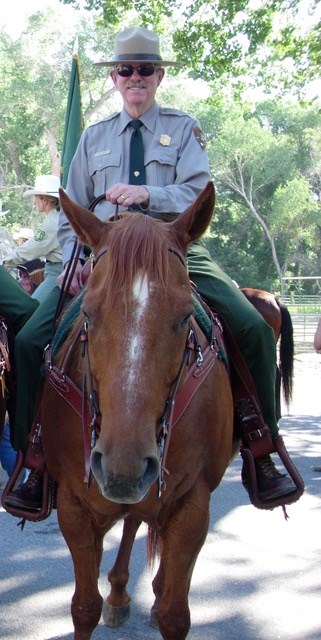
NPS
MARTIN: The approach that finally evolved in my mind was that my role was to listen. My role was to be sympathetic and understanding. To explain what NPS was actually doing and proposed to do, to assure folks that their concerns would be listened to and considered and also to explain that the people have, in fact, spoken. That it is a national park.
So, the first year I was there, we had thirty-nine public meetings. Never turned down an invitation to go to a meeting, even if it was in a bar. Responded as best I could. Always got back with people regarding their concerns.
And over the course of a year I believe that we, the park staff, were gaining credibility with people because we were speaking facts, and we were responding sympathetically, understandingly, but factually.
The second year I was there we had fewer meetings, although still plenty. By the third year, some amazing things began to happen. Discussions about the park evolved slowly. Many of the concerns that had been expressed began to be relaxed a little bit. Totally, no. But I began to feel like I was more welcome when I went to the grocery store and the gas station in the towns around there.
It was one of the most learning experiences for me in my career. Was it different than being a ranger? Dramatically. In some cases, not quite as much fun. More going to meetings than going out in the park to monitor and check on park resources and park visitors. But very rewarding long term.
JONES: Dick Martin co-authored the first backcountry management plan for Olympic National Park, one of the first backcountry management plans in the National Park System. After his Alaska assignment, Dick served as deputy chief ranger at Park Service headquarters and as superintendent of Death Valley National Park and Sequoia and Kings Canyon National Parks. He retired in 2005.
This has been “A Sense of Place: Stories of Stewardship from the National Park Service.” I’m your host, Lu Ann Jones. Alison Steiner conducted the interview at the Ranger Rendezvous of the Association of National Park Rangers.
This episode was produced by Emma Courtland and Robin Miniter for the National Park Service, with help from Otis Gray. Music by Blue Dot Sessions.
Discover More
Last updated: August 13, 2021

